Paris is famous for its 20th-century photographers such as Brassaï (1899−1984), Henri Cartier-Bresson (1908−2004), and Jacques Henri Lartigue (1894−1986). The city also produced two well-known celebrity photographers: Man Ray (1890−1976) and Felix Nadar (1820−1910) ⏤ Click here to read the blog, First Celebrity Photographer. During the mid-19th-century when photography was in its infancy, a group of photographers were hired by the city’s historic-works department to document Paris through their lenses. Today we are going to reintroduce you to one of those photographers, Charles Marville. While the original 2015 blog (same title) included only one image, we have expanded the story using multiple photographs. I have tried to find locations where a Marville photo can be paired with a contemporary image . . . the “before and after” effect. I like viewing these types of comparisons and thought you might also enjoy it.
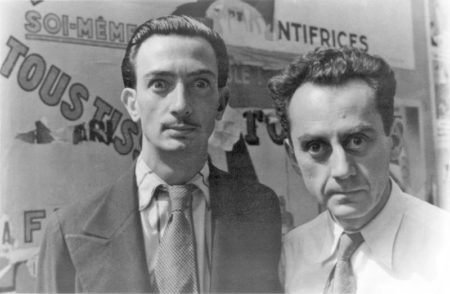
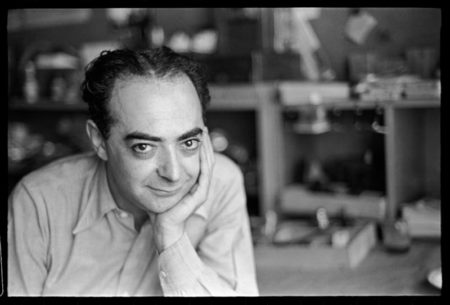
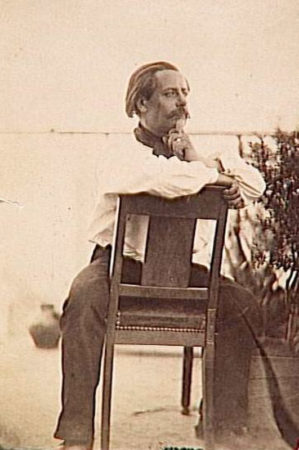
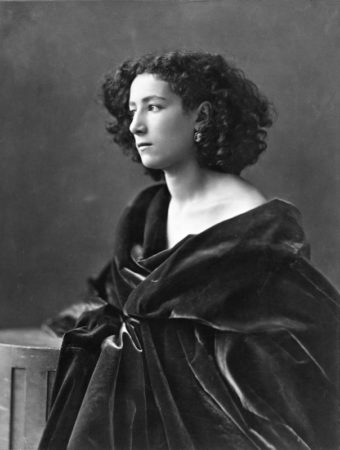
I’m often asked how and why I started writing the walking tour books and subsequently, the blogs. Well, around 2010, I ran across a book by Leonard Pitt called Walks Through Lost Paris (refer to the recommended reading section below). Mr. Pitt takes the reader on four walks through historic Paris and presents pre-Haussmann photographs side-by-side with contemporary shots. The reader can easily see how Paris was transformed in the mid-1800s from a medieval city to the modern city we enjoy today. Sandy and I took Mr. Pitt’s book with us to Paris, and I became determined to write a similar book but based on the French Revolution. My one-book idea blossomed into five published books with three or four more to come.
Mr. Pitt’s book introduced me to several photographers, including Marville, who were hired by the city to visually record Paris before Haussmann began ripping it apart (click here to read the blog, The Destruction of Paris and here to read the The Missing Emperor). These photographs were “discovered” in the 1980s and have been used extensively in books and exhibitions around the world. Sarah Kennel’s book, Charles Marville: Photographer of Paris, was written in conjunction with an exhibition coordinated by the National Gallery of Art in Washington, D.C. (again, refer to the recommended reading section below). It’s a beautiful book and I recommend it to anyone with an interest in historic Paris. From these images and old maps such as the 1550 Plan de Truschet and Hoyau, we are able to get a sense of what medieval Paris looked like. London was able to shed its medieval cloak after 1666 but it took Paris another two hundred years for its transformation.
When we first started going to Paris, I was not much into the “medieval” period. The Musée de Cluny, or musée national du Moyen Âge Paris (National Museum of Middle Ages) was not high on our list of stops. I gained a healthy interest in medieval Europe as I researched the history of Paris for our third and fourth books, Where Did They Burn the Last Grand Master of the Knights Templar (click here to read the blog, Cour des Miracles and here to read Hanging Around Medieval Paris). Even if you’re not into medieval times, I think you’ll find the images in this blog interesting.
Join Stew Ross for a Discussion on
BONJOUR PARIS
“REMEMBERING D-DAY:
Operation Double Cross”
Thursday, 6 June 2024
11:30 – 12:30 (EST)
Click here to watch the trailer for the presentation.
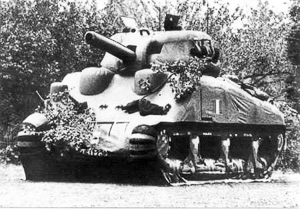
Register Now: Click here.
BONJOUR PARIS is a digital publication dedicated to all things Paris. Visit the web-site here.
Did You Know?
Did you know that Violaine Vanoyeke’s grave site is located in the Père Lachaise cemetery? I guess the real question is, “Do you know who Violaine Vanoyeke is?” It’s a beautiful plot in Division 21 with a lovely statue of Violaine and inscription of her various talents. The only problem is Violaine does not reside at this address. You see, she is not dead.
Born in 1956, Mlle. Vanoyeke is an author, poet, and woman of letters. She was a high school teacher and university lecturer. Violaine’s writings span a myriad of topics including history and science. She has gone as far as to declare a new literary movement called “naivism.” Her books on ancient history focus on Egyptians, Romans, and the Greeks. Violaine’s work has been published and translated into Spanish, Chinese, Greek, and Japanese. She’s quite popular and appears frequently on television, radio, and other media spots.
The problem is that many scholars have denounced her work and accused her of plagiarism. In their eyes, her background is suspect as well.
Regardless of what anyone thinks of her, Violaine is smart. Look at where she bought her plot ⏤ location, location, location. I suppose she could add “real estate agent” to her resume.
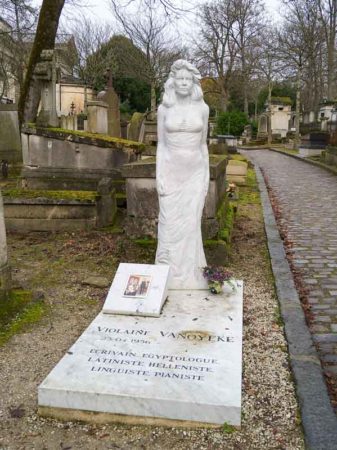
Thank you to Stockwell Roam for introducing me to Violaine as well as other interesting earthly occupants of Père Lachaise ⏤ dead or alive.
Early Photographs
Did you know that Paris was the site of the first photograph taken with people? Louis Daguerre (1787−1851) used his new technique called Daguerreotype to take the photo in 1838. It was called “Boulevard du Temple.” Despite the street being extremely busy with pedestrians and a lot of traffic, only two individuals showed up in the photo ⏤ a young boy shining the boots of a man. The required exposure time was more than 10 minutes and so those two individuals stood relatively still for that time to be captured in the photo while the moving traffic was not.
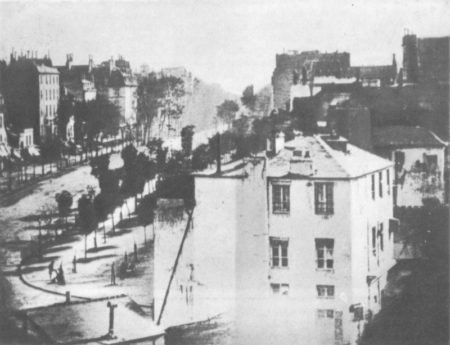
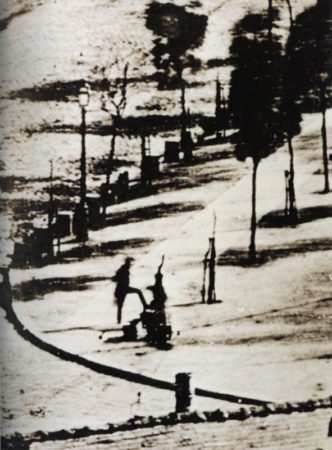
Charles Marville
Charles Marville (1813–1879) was one of the early photographers in Paris. His photographs of Paris in the mid-1800s are the best representations of the streets and buildings prior to their destruction by Napoléon III and Baron Haussmann. Many of his photos give you a good sense of what medieval Paris might have looked like (i.e., narrow streets, houses, workers such as the tanners, and streets used as sewers). Many of Paris’s historically significant buildings and streets were demolished over a 17-year period as Napoléon III carried out his vision for modernizing the city.
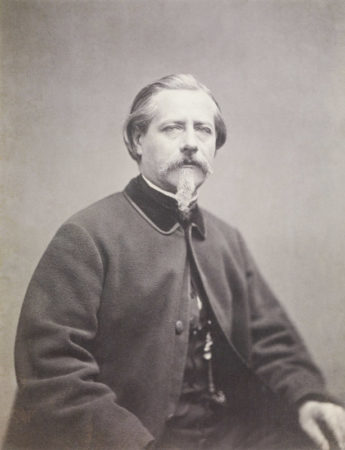
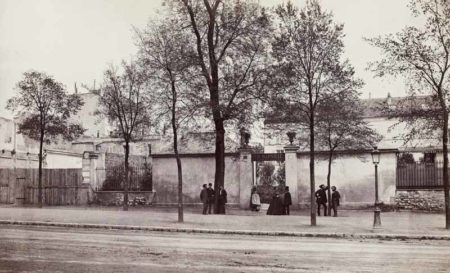
Marville was born Charles-François Bossu. He changed his name to Charles Marville in 1837 presumably since his last name, Bossu, means “hunchback.” Right about the same time, Victor Hugo published The Hunchback of Notre Dame (was it really a coincidence Bossu changed his name at that particular time?).
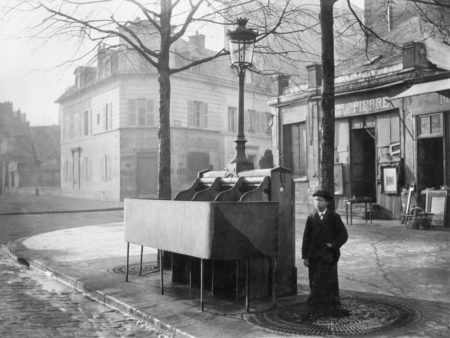
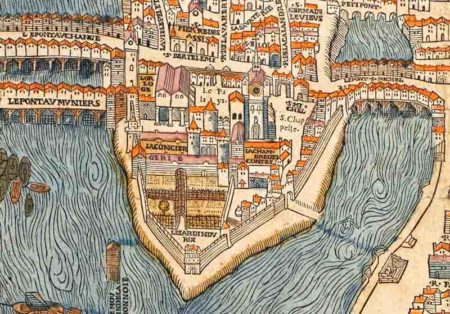
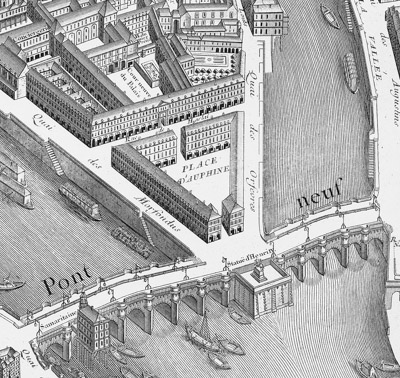
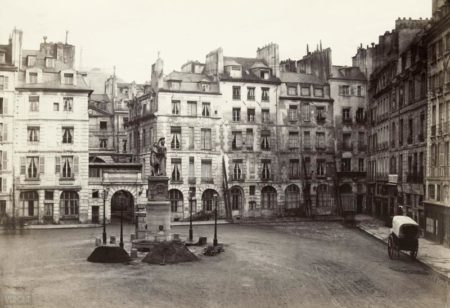
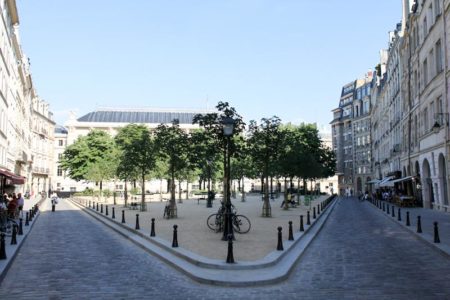
Marville Photographs
Monsieur Marville was named in 1862 as the photographe de la ville, or photographer of the city. In this capacity, he began a series of official photographs called Le Vieux Paris (Old Paris) that captured certain parts of the city — buildings and streets — before their destruction. This album of work consisted of approximately 450 photographs. They encompass his work over a 7-year period ending in 1869.
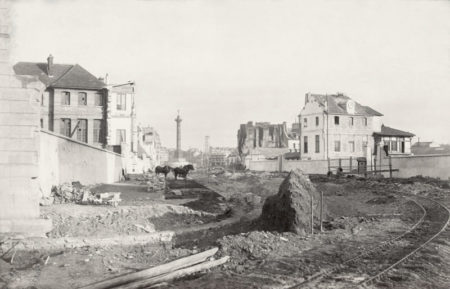
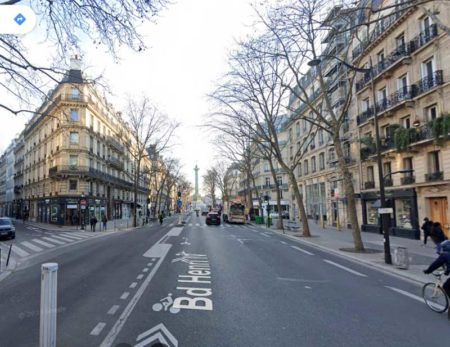
It is likely that many of Marville’s early photographs were destroyed. The city of Paris would have owned his photos and since the Hôtel Carnavalet (today, the museum of Paris) was undergoing renovations at the time, the collection of photos was placed within the Hôtel de Ville (city hall) for safekeeping. Unfortunately, the Hôtel de Ville was destroyed by fire during the Commune in May 1871 and many of the photos perished (along with much of the written documentation of the French Revolution).
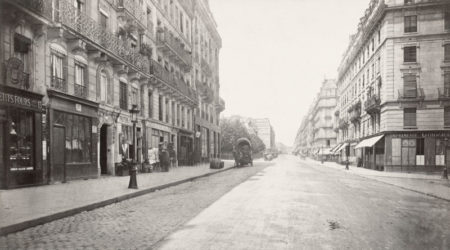
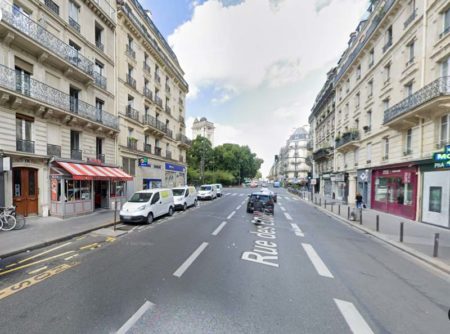
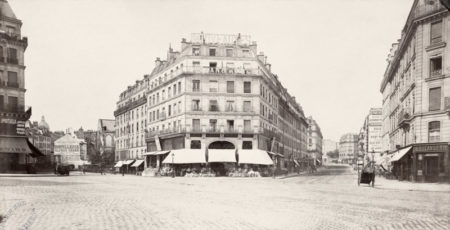
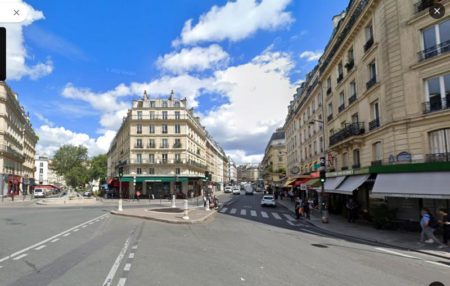
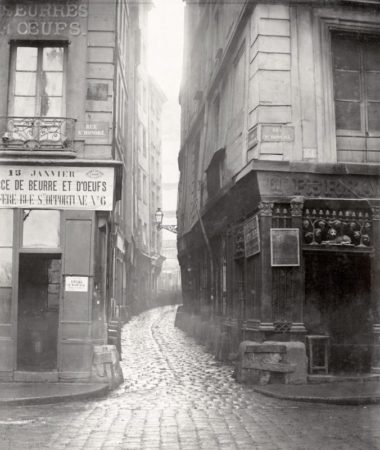
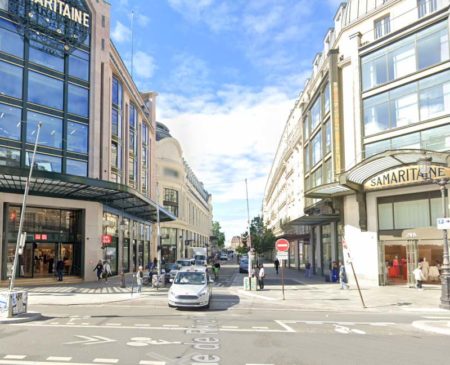
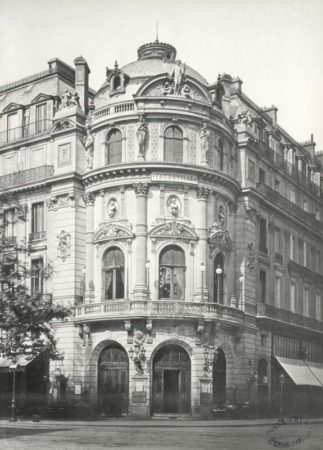
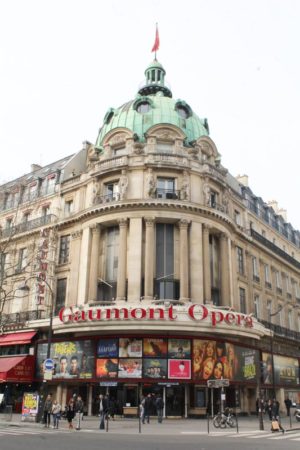
Death
Marville died on 1 June 1879 at his Paris home. Only two months earlier, his last will and testament were completed. Marville left his estate including photographic prints, negatives, and equipment to his sole life-long companion, Jeanne-Louis Leuba (1815−1882) ⏤ Marville had no children. Reportedly, he was buried in the Montrouge cemetery. The city quickly put a claim in for the prints and negatives, but Leuba indicated she would continue the business. However, in September, she sold Marville’s former property to the artist, Armand Guérinet (1852−1925). In 1882, Guérinet offers to sell the negatives to Paris and the following year, the sale was completed for 650 francs. The negatives were transferred to the Bibliothèque Historique de la Ville de Paris.
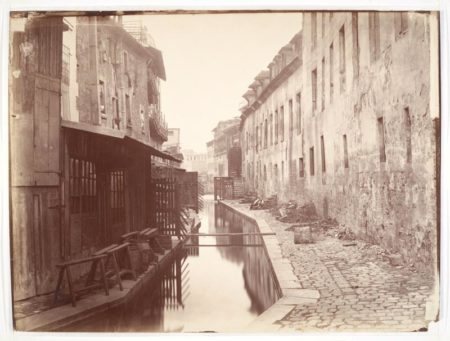
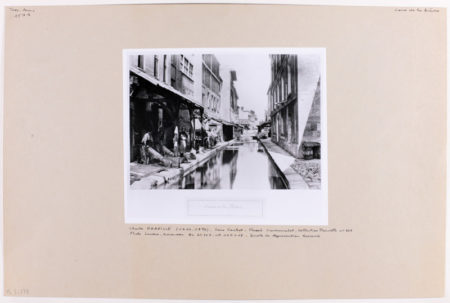
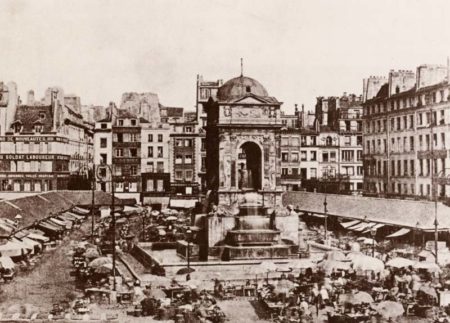
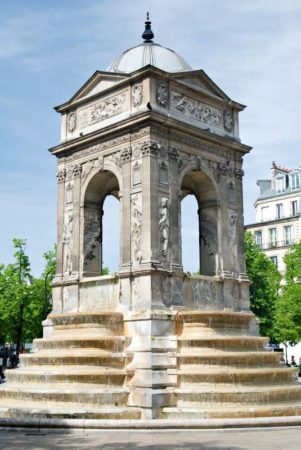
Charles Marville’s death and legacy were very obscure, and it wasn’t until the 1980s that his work was rediscovered. Today, the photographs are part of the collection held by the Paris-owned photographic agency, Roger-Viollet (6, rue de Seine, Paris), and loaned out to museums around the world for special exhibitions. Roger-Viollet owns, controls, and licenses almost all the official photos of Paris, photos of the relics held by city-owned museums, and other related images.
If you enjoy the historical aspect of Paris, don’t miss one of the Charles Marville photography exhibitions that come to your town. I know I won’t.
Next Blog: “The Georgian Gestapo”
Correspondence and Commentary Policy
We welcome everyone to contact us either directly or through the individual blogs. Sandy and I review every piece of correspondence before it is approved to be published on the blog site. Our policy is to accept and publish comments that do not project hate, political, religious stances, or an attempt to solicit business (yeah, believe it or not, we do get that kind of stuff). Like many bloggers, we receive quite a bit of what is considered “Spam.” Those e-mails are immediately rejected without discussion.
Our blogs are written to inform our readers about history. We want to ensure discussions are kept within the boundary of historical facts and context without personal bias or prejudice.
We average about one e-mail every two days from our readers. We appreciate all communication because in many cases, it has led to friendships around the world.
★ Read and Learn More About Today’s Topic ★
Besse, François. Charles Marville: Une Mémoire du Vieux Paris. French Edition. Paris: Parigamme, 2023.
Brassaï. Translated by Richard Miller. The Secret Paris of the 30’s. London: Thames & Hudson, 1976.
Kennel, Sarah and Anne de Mondenard, Peter Barberie, Joke de Wolf. Charles Marville: Photographer of Paris. Washington, D.C.: University of Chicago Press, 2013. Published in conjunction with the National Gallery of Art (U.S.), Metropolitan Museum of Art (New York, N.Y.), and National Gallery of Canada. Co-published with the Public Office National Gallery of Art, Washington.
“Marville’s Vanished Paris” by Luc Sante, The New York Review of Books, Sept. 2013. Click here.
Moncan, Patrice de. Charles Marville Paris Photographie au Temps d’Haussmann. French Edition. Ravières: Les Éditions du Mécène, 2008.
Pitt, Leonard. Paris, a Journey Through Time. Berkeley: Counterpoint, 2010.
Pitt, Leonard. Walks Through Lost Paris: A Journey into the Heart of Historic Paris. Berkeley: Counterpoint, 2006.
Sante, Luc. The Other Paris. New York: Farrar, Straus and Giroux, 2015.
Disclaimer:
There may be a chance that after we publish this particular blog, the video links associated with the blog are no longer accessible. We have no control over this. Many times, whoever posts the video has done so without the consent of the video’s owner. In some cases, it is likely that the content is deemed unsuitable by YouTube. We apologize if you have tried to access the link and you don’t get the expected results. Same goes for internet links.
What’s New With Sandy and Stew?
Sandy and I returned from Japan about three weeks ago. It was a cruise around the major islands as well as a stop in Busan, South Korea. I didn’t realize that Japan was 70% mountainous terrain, thus explaining why the major settlements are on the coasts. The country also boasts the largest number of active volcanoes in the world ⏤ makes sense considering Japan lies on the “ring of fire.”
We stayed in Tokyo for three days prior to embarking our ship. In our opinion, Tokyo (and other large cities) was no different than New York City except for three things: they drive on the left side of the road, you can’t read the signs, and it’s a lot cleaner. There is absolutely no indication of any urban planning in any of their major cities. Everything is thrown together in a hodge-podge way resulting in a very claustrophobic and confusing feeling.
However, the one aspect that surprised us the most was the lack of English spoken. We knew that finding people outside a major city who spoke English would be difficult. However, we met very few people in Tokyo (outside of our hotel) who spoke English and those who did, it was limited and hard to understand. (This did present problems on our excursions.) Now, as someone who does not speak a foreign language, I will never criticize anyone for not speaking my language and will always commend someone for attempting to learn English or any foreign language. (To be honest, I’m always a little jealous because one of my life’s regrets is not having learned French or German.) That being said, our surprise came from knowing that Japan is at the center of international business and that English is the agreed upon world language of business. Europe recognized this in the late 1950s and in the early 1960s began to require its young citizens to learn English as a second language. I’m not familiar with Japanese school systems and requirements but based on our interactions, it seems like they did not follow the European mandate. Just a comment on our experience and we’d love to hear about any of your experiences or knowledge about Japan.

Thank you to all of you who subscribe to our blogs. It seems there isn’t a day that goes by where we don’t increase our readership. Please let your history buff friends and family members know about our blog site and blogs.
Someone Is Commenting On Our Blogs
We have heard from many of you over the past several months. I apologize for not responding quickly to your wonderful comments. Sandy and I have been dealing with issues leading up to and resulting from the passing of my father in late March. The past four months have seen a shift in our priorities, but we are working our way through the list. Please be assured that I will be in touch with each of you. I appreciate your patience.
If there is a topic you’d like to see a blog written about, please don’t hesitate to contact me. I love hearing from you so keep those comments coming.
Shepherd.com is like wandering the aisles of your favorite bookstore.
Do you enjoy reading? Do you have a hard time finding the right book in the genre you enjoy? Well, Ben at Shepherd.com has come up with an amazing way to find that book.
Shepherd highlights an author (like me) and one of their books. The author is required to review five books in the same genre. So, if a reader is interested say in cooking, they can drill down and find specific books about cooking that have been reviewed by authors in that category. Very simple.
If you like to read, I highly recommend you visit Shepherd.com. If you do, please let me know what you think and I will forward Ben any suggestions or comments you might have.
Click here to visit Shepherd’s website.
Click the books to visit Stew’s bookshelf.
Check out Stew’s new bookshelf on the French Revolution.
Share This:
Follow Stew:
Find Stew’s books on Amazon and Apple Books.
Please contact Stew directly for purchase of books, Kindle available on Amazon. Stew.ross@Yooperpublications.com or Contact Stew on the Home Page.
Please note that we do not and will not take compensation from individuals or companies mentioned or promoted in the blogs.
 Walks Through History
Walks Through History
Copyright © 2024 Stew Ross





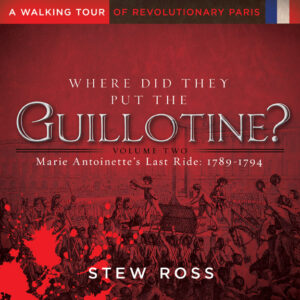



Stew, as always I am enthralled by your scholarship.
During my 55 years of practicing law in Washington, I was miraculously fortunate to have many Japanese corporate clients, and one in particular who stood by me (and vice versa) from the beginning to the end of that career. Of necessity that required many trips to Japan and hosting many client visits in Washington. When we started, there was not even a fax machine. Telephone was useless. Telex was the method of communication and it was not very good. By rough count I made around 200 trips to Japan and learned a lot. I do believe you are wrong when you opine that the Japanese school system does not require English as a subject. I believe it does. But the Japanese character discourages people from using it unless they are very good at it. They can understand far more than they are willing to speak.
Now that I am retired I really do miss Japan. So squeaky-clean. So safe. Such delicious cuisine. Such hard-working honest people.
Hi Carl;
Well, when I said that about English in the schools, I really had no factual basis. I kind of took a stab at that one based on our experiences. I had clients who did business in Japan and I was told stories that confirm the fact they don’t let on their proficiency in English. Always good to hear from you. Best as always. STEW